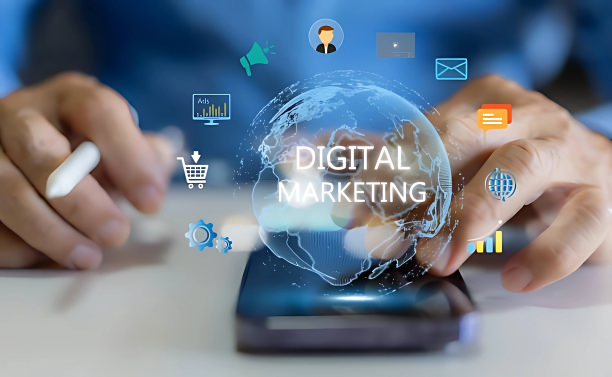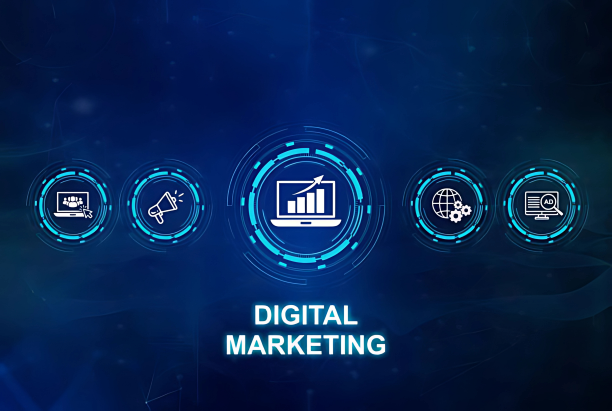
by raeezab@outlook.com | Jun 9, 2025 | Uncategorized
In the digital realm, visibility is everything. You can have the most innovative product or the most brilliant service, but if your target audience can’t find you online, your potential remains untapped. This is where the dynamic duo of SEO and content marketing comes into play. They aren’t just buzzwords; they’re the foundational pillars for achieving sustainable organic growth and ensuring your business isn’t just seen, but actively discovered by those who need you most.
Many businesses mistakenly view Search Engine Optimization (SEO) and content marketing as separate entities. In reality, they are two sides of the same coin, working in perfect synergy. SEO provides the technical framework and strategic insights to get your content seen by search engines, while content marketing creates the valuable, engaging material that satisfies user intent and keeps them coming back. Without compelling content, SEO has little to optimize. Without strong SEO, even the best content can languish in obscurity.
Why SEO and Content Marketing are Your Growth Engine
For businesses aiming for long-term, cost-effective growth, prioritizing SEO and content marketing offers undeniable advantages:
- Increased Organic Traffic: Unlike paid advertising, organic traffic comes from users actively searching for information related to your business. This traffic is highly qualified and more likely to convert, leading to a higher ROI over time.
- Enhanced Brand Authority and Trust: Consistently publishing high-quality, informative content that ranks well establishes your brand as an expert in your field. This builds credibility and trust with your audience.
- Sustainable Visibility: Once your content ranks well in search engines, it can continue to drive traffic and leads for months or even years without ongoing ad spend. This creates a lasting asset for your business.
- Deeper Customer Understanding: Creating content requires deep research into your audience’s questions, pain points, and interests. This process provides invaluable insights that can inform your product development, sales strategies, and overall digital marketing efforts.
- Cost-Effectiveness Over Time: While there’s an initial investment in content creation and SEO strategy, the cumulative benefits of organic traffic often outweigh the long-term costs of continuous paid campaigns.
- Improved User Experience: Modern SEO prioritizes user experience. This means optimizing for site speed, mobile-friendliness, and clear navigation, all of which directly benefit your website visitors.
The Symbiotic Relationship: How They Work Together
Understanding how SEO and content marketing intertwine is key to leveraging their full power:
- Keyword Research (SEO informs Content): The process begins with thorough keyword research. SEO tools identify the terms and phrases your target audience uses when searching for information, products, or services like yours. This intel then directly guides your content creation, ensuring you’re writing about what people are actually looking for.
- Content Creation (Content fuels SEO): Armed with keywords, you create valuable, relevant, and engaging content. This could be blog posts, articles, videos, infographics, guides, or case studies. High-quality content naturally attracts backlinks (links from other websites), which is a major SEO ranking factor.
- On-Page SEO Optimization (SEO fine-tunes Content): As you create content, you optimize it for search engines. This includes:
- Strategically placing keywords in titles, headings, and body text.
- Optimizing meta descriptions and image alt text.
- Ensuring your content is well-structured and easy to read.
- Ensuring your website design and development supports fast loading speeds and mobile responsiveness.
- Content Distribution (Content expands reach): Once published, your content isn’t just sitting there. You promote it through social media management, email newsletters, and other digital marketing channels. This distribution not only drives immediate traffic but can also earn more backlinks and social signals, further boosting its SEO performance.
- Performance Monitoring & Refinement (Both inform each other): You constantly track metrics like organic traffic, keyword rankings, bounce rate, and time on page. This data helps you understand what content is performing well, what needs improvement, and what new content opportunities exist, creating a continuous cycle of optimization.
Build
In the crowded digital landscape, waiting to be found simply isn’t an option. By strategically uniting SEO and content marketing, you’re not just creating online material; you’re building a powerful, self-sustaining engine for organic growth. This ensures your brand becomes a relevant answer to your audience’s needs, leading to increased visibility, stronger authority, and ultimately, a thriving business.

by raeezab@outlook.com | Jun 9, 2025 | Uncategorized
Your website is often the first impression customers have of your brand — and in the digital age, first impressions matter more than ever. Investing in effective website design and development is key to building trust, improving customer experience, and driving conversions.
The Role of Website Design in User Experience
Design isn’t just about aesthetics; it’s about how easily users can navigate your site and find what they need. Clean layouts, intuitive menus, and responsive design create a seamless experience that encourages visitors to stay longer and explore more.
Why Mobile-Friendly Design Matters
More than half of all website traffic comes from mobile devices. If your site isn’t optimized for phones and tablets, you risk losing potential customers. Mobile-friendly design ensures fast load times, readable text, and easy navigation on any device.
Key Elements of Effective Website Design and Development
Great development makes your website function smoothly. This includes fast loading speeds, secure connections (HTTPS), search engine optimization (SEO), and reliable hosting. A well-developed site supports growth and adapts to future business needs.
Visual Identity and Branding Online
Your website should reflect your brand’s personality and identity. Use consistent colors, fonts, and imagery that align with your logo and brand message. This helps reinforce brand recognition and builds trust with visitors.
Enhancing Credibility Through Website Design
Professional design conveys trustworthiness. Including testimonials, case studies, and certifications can increase credibility. High-quality images, clear calls to action, and updated content show visitors that your business is active and reliable.
Optimizing for Conversions
The ultimate goal of your website is to drive action — whether it’s filling out a contact form, making a purchase, or booking a service. Strategic placement of buttons, forms, and lead magnets guide users toward conversion without being pushy.
Your Website Is Your Digital Storefront
Website design and development are crucial to your brand’s success online. A well-designed site not only looks good but also works effectively to convert visitors into customers. Invest in a digital space that reflects your brand, supports your goals, and keeps users coming back.

by raeezab@outlook.com | Jun 9, 2025 | Uncategorized
In today’s fast-paced digital world, social media management goes beyond posting content — it’s about building relationships and creating a vibrant brand presence. Small businesses that want to thrive must learn to use social media effectively to engage their audience and foster loyalty.
Why Social Media Matters for Small Businesses
Social media platforms like Facebook, Instagram, and LinkedIn offer free and powerful ways to reach potential customers. With billions of active users daily, having a strong presence means increased visibility, brand recognition, and ultimately, sales growth. Social media is also an equalizer — it gives small businesses access to the same audiences that big brands reach.
Choosing the Right Platforms
Not all social media platforms serve the same purpose. Facebook is ideal for community building, Instagram works best for visual storytelling, and LinkedIn is great for B2B marketing. Choose the platform that aligns with your business goals and where your audience spends most of their time. TikTok, Pinterest, and Twitter can also be valuable depending on your content style and niche.
Creating Consistent and Quality Content
A successful social media strategy involves posting consistently and sharing high-quality content. This includes images, videos, stories, polls, and live streams. Consistency builds trust, and quality content encourages shares and saves, increasing your brand’s reach. Plan content calendars in advance to maintain momentum and relevance.
Scheduling and Engagement Tools
Using tools like Buffer, Hootsuite, or Meta Business Suite helps automate posts and track performance. These platforms save time and provide insights on what’s working best. Don’t forget to engage — reply to comments, like posts, and join conversations. Engagement is the key to creating a community, not just an audience. The more you interact, the more your brand feels human and relatable.
Measuring Success with Analytics
Track your results using each platform’s built-in analytics. Look for metrics like reach, engagement, click-through rates, and follower growth. These insights help refine your strategy and improve future posts. Tools like Google Analytics and UTM tracking links can also show how social traffic impacts your website.
Tips for Managing Social Media with a Small Team
Even without a big team, social media can be managed effectively. Batch-create content, schedule in advance, and delegate responsibilities. Use templates and design tools like Canva to streamline creative work. Encourage team members to contribute ideas and content.
Building Your Brand Through Social Media
Social media management may seem complex, but with the right tools and strategy, it becomes a powerful marketing asset. Focus on building genuine connections, and you’ll turn your followers into loyal customers and brand advocates. With consistency, creativity, and analytics, your small business can thrive in the digital space. Social media management may seem complex, but with the right tools and strategy, it becomes a powerful marketing asset. Focus on building genuine connections, and you’ll turn your followers into loyal customers and brand advocates.

by raeezab@outlook.com | Jun 9, 2025 | Uncategorized
Every great business starts with a brilliant idea. But an idea, no matter how revolutionary, stays just that – an idea – without effective reach. This is where a robust marketing strategy for startups becomes your secret weapon. For new businesses, where resources are often tight and every decision counts, a well-thought-out marketing plan isn’t just beneficial; it’s absolutely crucial for turning potential into tangible impact and propelling your venture towards stardom.
Many startups mistakenly think marketing can wait until they’re established. This is a critical error. A solid marketing strategy should be baked into your business plan from day one. It’s about more than just selling; it’s about building brand awareness, finding your first customers, proving your value, and securing that vital early traction.
Why Your Startup Can’t Afford to Skip a Marketing Strategy
For startups, the stakes are high, and the right marketing strategy offers distinct advantages:
- Efficient Resource Allocation: Startups rarely have unlimited budgets. A clear strategy ensures you spend your limited time and money on the most effective channels, avoiding costly trial-and-error.
- Defining Your Niche: In a crowded market, a strategy helps you identify your ideal customer and craft a message that genuinely resonates with them, setting you apart from competitors.
- Building Early Traction: Getting those crucial first customers and early adopters is vital. A strategic approach helps you find them quickly and convince them to try your product or service.
- Attracting Investors: VCs and angel investors aren’t just looking for a good idea; they want to see a clear path to market and customer acquisition. A detailed marketing strategy demonstrates your understanding of growth.
- Establishing Brand Identity: From your logo to your messaging, a strategy guides the development of a consistent visual identity design and overall brand voice that builds trust and recognition.
- Measuring and Adapting: A good strategy includes metrics to track performance. This allows you to learn quickly from your campaigns, pivot when necessary, and optimize for better results – an agile approach essential for startups.
Crafting Your Startup’s Winning Marketing Strategy: Key Steps
Building a powerful marketing strategy for startups involves a few key steps, focusing on lean and effective tactics:
- Understand Your Core Offering & Value Proposition: What problem does your startup solve? What makes you unique? Clearly articulate your value proposition – why should customers choose you over anyone else? This forms the bedrock of all your messaging.
- Deep Dive into Your Target Audience: Who are you trying to reach? Create detailed buyer personas: demographics, psychographics, pain points, daily routines, and where they hang out online. Knowing your audience intimately informs every marketing decision.
- Define Clear, Achievable Goals: What do you want to achieve in the short and long term? (e.g., “acquire 100 beta users in 3 months,” “achieve $5,000 in monthly recurring revenue by year-end,” “increase brand mentions by 20%”). Make them SMART (Specific, Measurable, Achievable, Relevant, Time-bound).
- Research the Competition: Analyze what your direct and indirect competitors are doing well, where they’re falling short, and identify gaps in the market you can fill. This informs your differentiation.
- Prioritize Digital Channels (Cost-Effectively): For startups, digital marketing is often the most cost-effective path to market. Focus on channels that align with your audience and budget:
- SEO and Content Marketing: Start a blog that answers your audience’s questions, establishes you as an expert, and drives organic traffic.
- Social Media Management: Identify the 1-2 platforms where your audience spends the most time and focus your efforts there to build community and engage.
- Email Marketing: Start building an email list from day one for direct communication and nurturing leads.
- Basic Website Design and Development: Ensure you have a professional, mobile-friendly website that clearly communicates your offering and captures leads.
- Develop Your Messaging & Brand Story: How will you communicate your value proposition? Craft compelling, consistent messages that resonate with your target audience. This is where your visual identity design comes into play, ensuring a cohesive look and feel across all touchpoints.
- Set Your Budget and Key Metrics: Allocate your budget wisely across chosen channels. For each goal, define key performance indicators (KPIs) you’ll track (e.g., website traffic, lead conversions, social media engagement, cost per acquisition).
- Launch, Learn, and Iterate: Don’t wait for perfection. Launch your initial campaigns, monitor your KPIs closely, gather feedback, and be prepared to pivot or adjust your strategy based on real-world results. Agility is a startup’s superpower.
Your Path from Idea to Impact
A well-crafted marketing strategy for startups isn’t just about spending money; it’s about smart growth. By systematically understanding your audience, defining your unique value, and strategically deploying your limited resources, you can move your brilliant idea beyond the drawing board and truly propel your startup to impactful, sustainable stardom. If you need a guiding hand, remember that marketing consultancy can provide invaluable expertise in these early, critical stages.

by raeezab@outlook.com | Jun 9, 2025 | Uncategorized
In the bustling online world, simply “doing” digital marketing isn’t enough. You can post on social media, run a few ads, and even write a blog post here and there, but without a clear roadmap, your efforts risk being fragmented and ineffective. What you need is a well-defined and robust digital marketing strategy.
A digital marketing strategy isn’t just a to-do list; it’s the comprehensive plan that outlines how your business will achieve its marketing goals through online channels. It acts as your compass, guiding every decision and ensuring that your efforts are cohesive, targeted, and ultimately, deliver sustainable success. This is especially critical if you’re developing a marketing strategy for startups, where every resource counts
Why a Digital Marketing Strategy is Your Blueprint for Growth
Think of it this way: you wouldn’t build a house without a blueprint, and you shouldn’t build your online presence without a strategy. Here’s why it’s indispensable:
- Clarity and Direction: A strategy defines your goals, identifies your target audience, and determines the best channels to reach them. This eliminates guesswork and ensures everyone on your team is working towards the same objectives.
- Optimized Resource Allocation: Knowing what you want to achieve and who you want to reach allows you to allocate your time, budget, and human resources effectively. No more wasted effort on channels that don’t serve your purpose.
- Competitive Advantage: A well-researched strategy helps you understand your market, identify your unique selling propositions, and differentiate yourself from competitors.
- Measurable Results and Adaptability: A good strategy includes key performance indicators (KPIs) that allow you to track progress. This data-driven approach means you can identify what’s working (and what isn’t) and adapt your tactics accordingly.
- Consistency and Brand Cohesion: A strategy ensures a consistent brand message and tone across all your digital marketing channels, strengthening your brand identity and building trust with your audience.
Key Steps to Crafting Your Robust Digital Marketing Strategy
Developing an effective digital marketing strategy involves several crucial steps:
- Define Your Goals (SMART is Best!): Before anything else, what do you want to achieve? Be Specific, Measurable, Achievable, Relevant, and Time-bound (SMART). Do you want to increase website traffic by 20% in the next six months? Boost online sales by 15% in the next quarter? Clearly defined goals set the foundation.
- Identify Your Target Audience: Who are you trying to reach? Go beyond demographics. Create detailed buyer personas that include their pain points, interests, online behavior, and preferred channels. The more you understand your audience, the better you can tailor your messaging and choose the right platforms.
- Conduct a Competitive Analysis: What are your competitors doing well (or not so well) in the digital space? Analyze their websites, social media presence, content, and SEO efforts. This can reveal opportunities and help you carve out your unique niche.
- Audit Your Current Digital Presence: Take stock of your existing website, social media profiles, email lists, and any previous digital marketing activities. What worked? What didn’t? What needs improvement?
- Choose Your Digital Channels & Tactics: Based on your goals and audience, select the most relevant digital marketing channels. This might include:
- SEO and Content Marketing: To drive organic traffic and establish authority.
- Social Media Management: To build community and engagement.
- Paid Advertising (PPC): For immediate visibility and targeted reach.
- Email Marketing: For nurturing leads and retaining customers.
- Website Design and Development: Ensuring your central hub is optimized for conversions.
- Plan Your Content Strategy: What kind of content will you create for each channel? How often? How will it address your audience’s needs and pain points? This is where your SEO and content marketing efforts become vital.
- Set Your Budget: Allocate funds across your chosen channels and activities. Be realistic about what you can spend and look for cost-effective solutions, especially if you’re a startup.
- Define Your KPIs and Measurement Plan: How will you measure success? What metrics will you track for each goal? Regular monitoring and analysis are crucial for identifying what’s working and making necessary adjustments.
- Implement, Monitor, and Optimize: Execute your plan, but don’t just set it and forget it. Continuously monitor your performance, analyze the data, and be prepared to iterate and optimize your strategy based on what you learn. The digital landscape is always evolving, and so should your strategy.
Your Path to Sustainable Growth
Crafting a robust digital marketing strategy is not a one-time event; it’s an ongoing process of planning, execution, and refinement. By investing the time and effort into building this blueprint, you’re not just chasing clicks – you’re building a sustainable path to growth, brand loyalty, and long-term success for your business.

by raeezab@outlook.com | Jun 9, 2025 | Uncategorized
In today’s hyper-connected world, digital marketing is no longer a luxury—it’s a necessity. Small businesses that embrace digital channels are more likely to reach new customers, build brand awareness, and compete on a larger scale. Whether you’re just starting out or looking to grow, digital marketing offers scalable, measurable, and cost-effective tools to transform your business.
The Building Blocks of Digital Marketing
Digital marketing encompasses a wide range of tactics, including SEO, email campaigns, paid advertising, and content marketing. Each component plays a unique role in attracting and converting leads. By understanding these building blocks, small businesses can create a well-rounded strategy that delivers long-term results.
Choosing the Right Channels for Your Audience
Every business is different, and so are its customers. It’s crucial to identify where your audience spends their time online—be it on social media, search engines, or industry-specific forums. Tailoring your digital marketing strategy to meet them where they are increases engagement and conversion rates.
How to Measure ROI
A key benefit of digital marketing is its trackability. From Google Analytics to social media insights, there are numerous tools that allow businesses to monitor the performance of their campaigns. Measuring ROI ensures you’re getting value for your investment and provides insights into what’s working and what needs improvement.
Tips for Staying Ahead of Trends
The digital landscape is constantly evolving. Staying informed about new tools, algorithm updates, and consumer behaviors is essential. Subscribe to industry blogs, attend webinars, and test new strategies regularly to keep your marketing efforts fresh and effective.
Your Next Digital Move
Digital marketing is an ever-evolving field that empowers small businesses to connect with their audience in meaningful ways. By mastering the basics and staying agile, you can create a strategy that grows with your business. Ready to level up your marketing game? Start with the essentials and scale as you learn.






